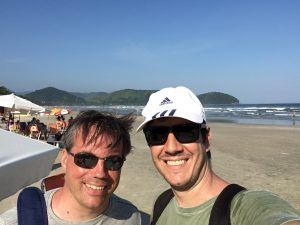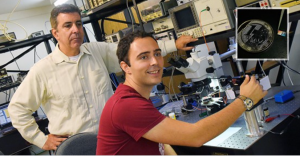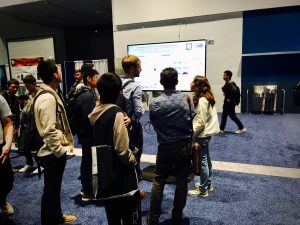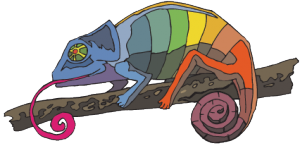Author's posts
Several postdoc positions available at our group!
Please check our post-doc Opportunities. Application deadline coming up soon in late October and early November!
2019 grants started!
We are happy to announce our recent grant applications were approved by FAPESP! These grants should ensure solid funding for the next several years. Soon we will announce available positions! Non-Classical States of Light on Chips: FAPESP Young Researcher Award – PI Felippe Barbosa Nonlinear nanophotonics circuits: building blocks for optical frequency synthesis, filtering and signal processing : …
Group picture – May 2019
From left to right: Newton F., Antônio V., Natalia C., Felippe B., Michäel M., Gustavo W., Pierre A., Marvyn I., André P., Cauê M., Caíque R., Ana Luisa, Pedro P., André M., Gustavo P., Roberto Z., Rodrigo B., Yovanny V., Carol V., David B., Thiago A.
Mario Souza receives IFGW’s prize for best PhD thesis awarded in 2017!
Our PhD alumni Mario Souza (now in the USA working at a startup) received the prize for the best PhD thesis awarded in 2017 at the Gleb Wataghin Physics Institute. During his PhD, under advisory of Prof. Frateschi, Mario worked on various aspects of Silicon micro cavities. His PhD thesis can be downloaded at …
Welcome David!
David Bellec, an undergraduate student from L’Ecole Nationale Supérieure d’Ingénieurs de Caen (ENSICAEN) in France, joined us for an internship. He will be working together with Marvyn, Lais, and Louise to improve our group velocity dispersion measurement setup.
SAMSUNG fellowship
Tunable light filters In this partnership between SAMSUNG and the Device Research Laboratory, the goal is to investigate tunable light filters. The project is led by professors Thiago Alegre and Gustavo Wiederhecker at the Gleb Wataghin Physics Institute in collaboration with scientists at Samsung Research Brazil (SRBR). We are currently searching for outstanding candidates pursuing …
Rodrigo’s Scientific Reports is out!
Abstract: Photonic crystals use periodic structures to create frequency regions where the optical wave propagation is forbidden, which allows the creation and integration of complex optical functionalities in small footprint devices. Such strategy has also been successfully applied to confine mechanical waves and to explore their interaction with light in the so-called optomechanical cavities. Because of …




